National Healthcare Quality and Disparities Report
Latest available findings on quality of and access to health care
Data & Analytics
- Data Infographics
- Data Visualizations
- Data Tools
- Data Innovations
- All-Payer Claims Database
- Consumer Assessment of Healthcare Providers and Systems (CAHPS®) Program
- Healthcare Cost and Utilization Project (HCUP)
- Medical Expenditure Panel Survey (MEPS)
- National Healthcare Quality and Disparities Report Data Tools
- Network of Patient Safety Databases
- AHRQ Quality Indicator Tools for Data Analytics
- Surveys on Patient Safety Culture
- United States Health Information Knowledgebase (USHIK)
- Data Sources Available from AHRQ
Search Publications
The Agency for Healthcare Research and Quality (AHRQ)'s publications offer practical information to help a variety of health care organizations, providers, and others make care safer in all health care settings.
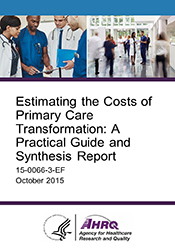
Estimating the Costs of Primary Care Transformation: A Practical Guide and Synthesis Report
This guide was developed based on the experiences and lessons learned from the 15 AHRQ Estimating Costs grants.
Publication Date: Publication Number: 15-0066-3-EF
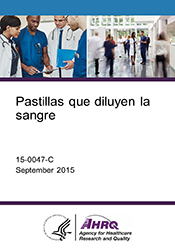
Pastillas que diluyen la sangre
Blood thinner pills - a guide to using them safely in Spanish.
Publication Date: Publication Number: 15-0047-C
Key Lessons from the National Evaluation of the CHIPRA Quality Demonstration Grant Program
This summary, which draws from products produced throughout the National Evaluation of the CHIPRA Quality Demonstration Grant Program, highlights program objectives, the strategies States used, and the lessons learned. This summary also includes short descriptions of selected activities implemented by the CHIPRA quality demonstration States.
Publication Date: Publication Number: 15-0071
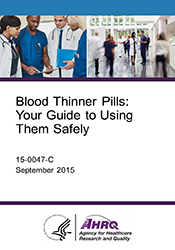
Blood Thinner Pills: Your Guide to Using Them Safely
AHRQ offers a free booklet and a video about blood thinner medicines. Staying Active and Healthy with Blood Thinners, a 10-minute video, features easy-to-understand explanations of how blood thinners work and why it's important to take them correctly.
Publication Date: Publication Number: 15-0047-C

High-Performance Work Practices in CLABSI Prevention Interventions
This analysis of case studies developed from participants in AHRQ's Comprehensive Unit-based Safety Program (CUSP) national implementation project describes specific practices and "success factors" for reducing and eliminating central line-associated bloodstream infections (CLABSIs) in health care facilities.
Publication Date: Publication Number: 15-0044-EF

Care Management: Implications for Medical Practice, Health Policy, and Health Services Research
This issue brief highlights key strategies to enhance existing or emerging care management programs and summarizes recommendations for decisionmakers in practice and policy, as well as for future research.
Publication Date: Publication Number: 15-0018-EF
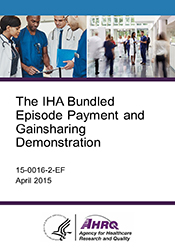
The IHA Bundled Episode Payment and Gainsharing Demonstration
This study snapshot presents lessons learned from a demonstration and evaluation grant to develop and implement a bundled payment program, including health plans, hospitals, ambulatory surgery centers, physician organizations, physicians, and technology vendors.
Publication Date: Publication Number: 15-0016-2-EF
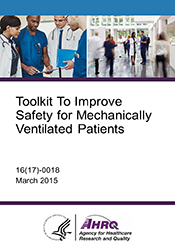
Toolkit To Improve Safety for Mechanically Ventilated Patients
The Toolkit To Improve Safety for Mechanically Ventilated Patients helps hospitals make care safer for mechanically ventilated patients in intensive care units (ICUs). ICU staff can use the toolkit to apply the proven principles and methods of AHRQ’s Comprehensive Unit-based Safety Program to reduce complications for patients on ventilators.
Publication Date: Publication Number: 16(17)-0018
Health Literacy Universal Precautions Toolkit, 2nd Edition
The AHRQ Health Literacy Universal Precautions Toolkit, 2nd edition, can help primary care practices reduce the complexity of health care, increase patient understanding of health information, and enhance support for patients of all health literacy levels.
Publication Date: Publication Number: 15-0023-EF

Health Care Simulation to Advance Safety
This issue brief underscores the helpful role simulation can serve in response to the Ebola virus disease, other emergent epidemic challenges, provider and patient safety, and quality of care in general.
Publication Date: Publication Number: 15-0021



